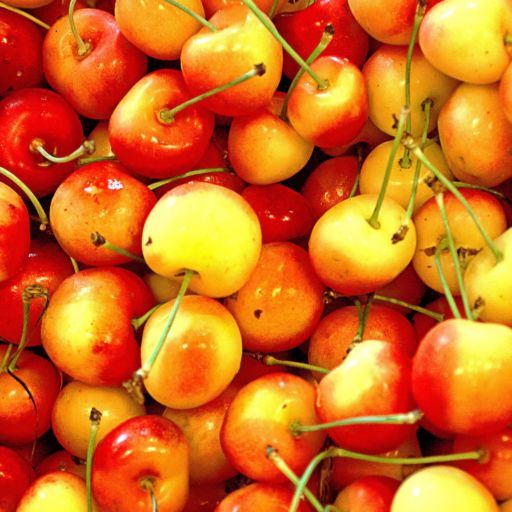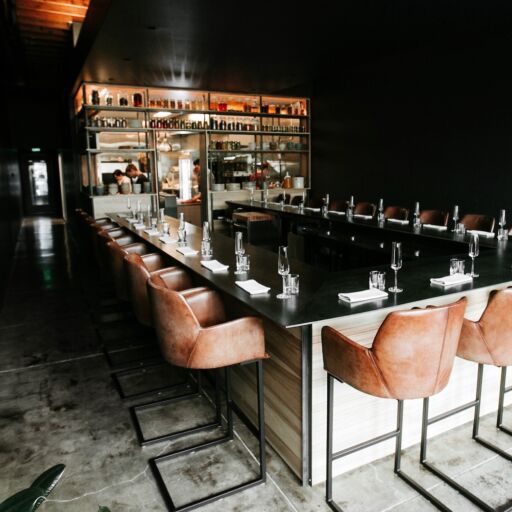This story appears in The Food Issue, which is on sale here and is in stores now.
For more than two years, restaurants across the U.S. have fought to stay open due to the pandemic’s devastating effect. As local restrictions hindered dining services and leisure travel grounded or undercut for much of that time, the country’s food scenes — from New York to Seattle — suffered but ultimately survived. New restaurants were born, outdoor dining and to-go cocktails were heralded, and chefs continued to make the food that we love, all of which inspires us to explore more cities that serve up something special.
By now you’ve seen the results of our first-ever food survey, and the list of the top 10 food cities in the country based on our readers’ opinions. As we said, it’s basically a best-of list of the essential American dining scenes. What we have here are 10 additional cities that are certainly worthy of a visit based on food alone. This list has been curated by our editorial team and meant to augment the survey’s top 10 cities.
Northeast
Philadelphia
Sometimes overshadowed by its neighbors — New York and D.C. — Philadelphia’s food scene boasts more than its ubiquitous cheesesteaks (although a “Whiz wit” from Pat’s or Geno’s is definitely road trip worthy). The city’s historic South Ninth Street Italian Market, which opened in the 1880s, still maintains its old-school heritage, but has welcomed a new wave of immigrants who now share specialties like authentic Mexican fare. Plus, the surrounding neighborhood is home to Asian eateries and grocery stores featuring Korean barbecue and Vietnamese pho.
Why now: A 28,000-square-foot restaurant, the biggest in the city, is coming to Penn’s Landing this spring. Situated next to the Independence Seaport Museum, it will be a multi-level restaurant and entertainment venue called Liberty Point. The complex will feature a permanent stage for live music, DJs and other entertainment, plus five bars, including one on a boat.
Portland, Maine
Thanks in part to some major food media clout (Bon Appetit named it the best restaurant city in the U.S. in 2018), Portland, Maine, has developed into a bonafide foodie destination. Because of its proximity to the Atlantic and its abundance of farmland, the Northeastern city has been able to attract culinary talent and, in turn, hungry tourists. While lush lobster rolls, oysters on the half shell and summer blueberries remain popular staples across the state, travelers will also find elevated Middle Eastern street food at Baharat and Japanese specialties like sashimi, udon noodles with duck breast and okonomiyaki at Izakaya Minato.
Why now: Found largely along the coast of Maine, seaweed harvesting and farming has grown recently as interest in foods and nutritional products made with the marine algae have risen in popularity. And it’s not just for making that viral salmon rice recipe from TikTok; it’s also processed into products such as seaweed sauerkraut and frozen kelp cubes for smoothies. Saco, Maine-based Atlantic Sea Farms, located just south of Portland, sells fermented seaweed salad, kelp smoothie cubes, sauerkraut and kimchi.
Southeast
San Juan, Puerto Rico
In the fall of 2017, Hurricane Maria tore across Puerto Rico, causing major destruction. And while some parts of the island continue to struggle to recover, San Juan has rebounded, even welcoming new hotels and restaurants that are committed to serving seasonal, local produce. The city’s lively restaurant and nightclub district, known as La Placita, is home to Santaella, which offers up traditional Puerto Rican dishes like quesadilla de queso de cabra and alcapurrias. At Cocina Abierta, a restaurant and cooking school, you’ll find a fusion of Caribbean and Latin fare such as plantain carpaccio with tuna tataki and ginger- and turmeric-braised chicken.
Why now: Through June, the city of San Juan will celebrate its 500th birthday with events including art exhibits, parades, academic forums and concerts across the city, making it a good time to visit and experience the culture and cuisine.
Miami
As Miami attempts to reinvent itself as the next Silicon Valley, its food scene is also experiencing a jolt, with major growth within the local restaurant industry. That’s in part due to the influx of residents who were seeking sunshine during the dark days of the pandemic and looking to take advantage of the lax Florida laws. For example, New York’s Major Food Group, which manages Carbone restaurants in New York and Las Vegas, recently opened a Miami post that’s quickly become the hottest reservation in town. But despite the new arrivals, you’ll still be able to find Cuban sandwiches at Versailles in Little Havana (considered the best in the city) and the namesake crustaceans at Joe’s Stone Crab.
Why now: Beyond Carbone, Major Food Group opened five other restaurants in the Miami area last year, including a members-only club, with presumably more to come. Smorgasburg, the largest weekly open-air food market in the U.S., with locations in Brooklyn, Manhattan, Jersey City and Los Angeles, is opening a Miami outpost this spring in the Wynwood neighborhood that’s set to showcase the best of South Florida food.
Southwest
Austin
Over the last decade or so, young folks have flocked to Austin due to its livability and tech industry hype, which has fueled a thriving dining scene. Now, the Texas town is considered one of the country’s top food destinations with a mix of Tex-Mex, breakfast tacos and barbecue. Speaking of, wait in line (it’s worth it) at Franklin Barbecue for some brisket, ribs, turkey and sausages. And be sure to hit up one of the city’s many taco joints like Torchy’s Tacos, Veracruz All Natural and Ñoños.
Why now: Like Miami, Austin experienced a rush of new residents (like Tesla’s Elon Musk) during the pandemic. And while it’s too early to tell how these newcomers will influence the city’s food scene, they will undoubtedly bring with them some fresh new fare and hopefully the funds to drive even more growth.
Houston
When talking about Texas, Austin may get all the cool-kid points, but Houston, America’s fourth largest city, might be where the true heart and soul of the state lives. Of course, barbecue remains a mainstay, but for years the city has been home to one of the highest concentrations of immigrant communities in the States and eclectic dining traditions. For traditional Houston grub, though, head to Ray’s Real Pit BBQ Shack for classic East Texas barbecue served up with hearty sides, or grab some queso and fajitas at Original Ninfa’s on Navigation, which is credited with creating the Tex-Mex favorite.
Why now: The latest season of Bravo’s “Top Chef” series, which features chefs competing against each other in culinary challenges, is set in Houston and includes the city’s own Evelyn García, among the show’s “cheftestants.” Expect the buzz about Houston to get even louder.
Midwest
Cleveland
Influenced by generations of Eastern European immigrants, Cleveland’s food scene isn’t just pierogies and kielbasa sausages — although you will find some of the best in the U.S. here. Explore the maze of butchers, bakeries, fruit and vegetable vendors and even purveyors of Cambodian cuisine at the West Side Market, the city’s oldest. Then, swing by hometown hero and celebrity chef Michael Symon’s last remaining joint in Cleveland: Mabel’s BBQ.
Why now: In January, Gabriel Zeller and Julie Mesenburg opened Indie East 4th, flanking the walls with their personal inventory of concert posters, from Radiohead to Dave Matthews Band to The Decemberists. While the cocktail menu features concoctions named after songs like “Who’s Going to Drive You Home Tonight?,” the food menu includes less lyrical, Southern-influenced dishes like fried chicken and baked mac and cheese.
West
Honolulu
With a cornucopia of fresh fruits and veggies, cattle farms and sashimi-grade fish swimming in the surrounding Pacific, Hawaii is an agricultural gold mine, which, for better or for worse, has always drawn global interests, creating a unique, multilayered cuisine. In the past few years, the capital city of Honolulu has emerged as its own foodie destination with neighborhoods such as Kakaako, Kaimuki and Chinatown filling up with trendy eateries and mom-and-pop diners that serve local specialties like loco moco (white rice topped with a hamburger patty, fried egg and brown gravy).
Why now: Despite the economic effects of the pandemic on the tourism industry, the city’s restaurant scene continues to flourish. Local chefs like Ed Kenney are evolving island cuisine with their own twists like beet poke and miso-butterscotch rice pudding, which can be found at Kenney’s Mud Hen Water restaurant, located in Honolulu’s Kaimuki neighborhood.
Portland, Ore.
Any town that’s known for its doughnuts can’t be bad in our book. But beyond the bacon maple bar from Voodoo Doughnut, Portland’s culinary scene is an eclectic combo of food carts and white-tablecloth restaurants. Like most great food towns, it’s Portland’s accessibility to farm-fresh produce paired with the wine from the Willamette Valley, along with a sense of camaraderie among the chefs, that feeds its cuisine, which ranges from French to Thai to flying ants. At Nong’s Khao Man Gai, order the khao man gai, obviously, which is chicken cooked in broth, served with rice and topped off with a sweet chile and soybean sauce. And at Portland’s buzzy newcomer, República, discover Mexican dishes with ingredients like chicatanas (flying ants) and huitlacoche (corn truffles).
Why now: Not surprisingly, the pandemic has inspired some Portland chefs to rethink their menus in weird and wonderful ways. Acclaimed chef Gabriel Rucker’s Le Pigeon used to be known for its iconic bodacious burger on a ciabatta bun. Nowadays, the restaurant features a tasting menu with five courses.
Seattle
As you would expect, thanks to its coastal perch, Seattle honors all things from the sea, as evidenced by those famous flying fish at Pike Place Market and the Alaskan salmon shipment fanfare at the Sea-Tac Airport. The city is home to world-class Asian restaurants that serve up favorites like pho and teriyaki. And let’s not forget the quirky bits like the cream-cheese-topped hot dog known as a Seattle dog and, of course, Starbucks.
Why now: Last year, a state law made it easier for breweries and cideries to combine forces and register together as a distillery. As a result, Yonder Cider and Bale Breaker Brewing Co. opened a joint taproom in the heart of the Ballard Distillery District, bringing 32 taps of Washington-made beer and cider under one roof. Another collaboration between Crucible Brewing and Soundbite Cider is in the works as well.




